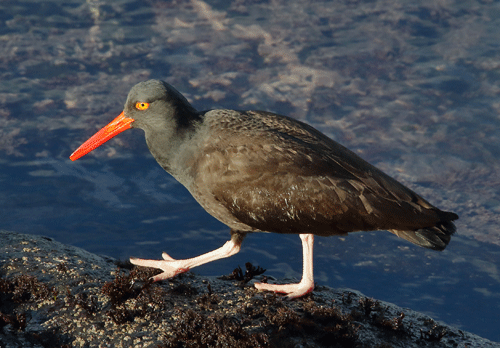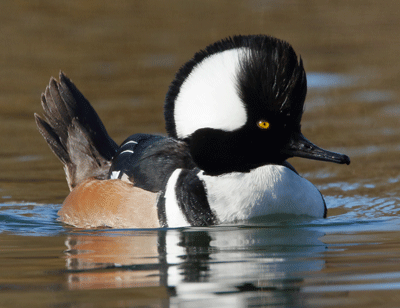Bird Surveys
Counting on the Birds!
Throughout the year there are many organized bird counts in our region. The scope ranges from national to regional, and the format from defined protocols to whatever you can count. These surveys are examples of citizen science, a collaboration between scientific researchers and the general public. When you participate, you help provide data that will contribute to further understanding bird populations, their distribution, and any population changes. Two bird counts are held locally: the Christmas Bird Count (CBC) for the Corvallis area and the North American Migratory Bird Count (NAMC) which covers Benton County.
Christmas Bird Count
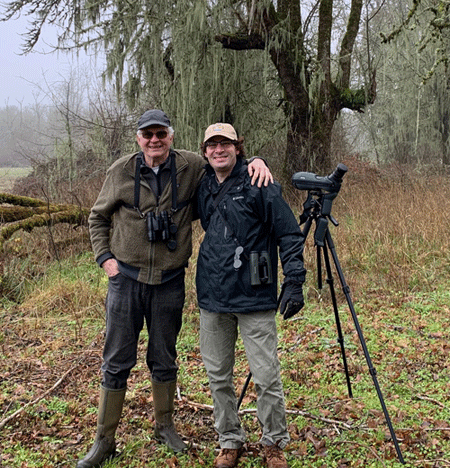
Corvallis CBC
2023 Results
The 63rd Corvallis Christmas Bird Count took place on December 19, 2023. Sixty-one field observers and feeder watchers counted 92,531 birds of 126 species. New records were set for the number of birds seen in several species, including Merlin, Black Phoebe, and White-breasted Nuthatch. A big “thank you” to the owners and land stewards who allow access during the CBC.
Results spreadsheet Western Hemisphere CBC data
The 2024 Corvallis CBC will be on Dec. 17. If you would like to participate, contact Bev Clark.
History
The first Corvallis CBC was held on December 26, 1912, but the next count was not held until 1962. The CBC has been held every year since then. The Corvallis CBC is traditionally held on the Tuesday before Christmas. Everybody is invited – and participation is free.
Corvallis count sectors
The Corvallis count circle has a 7.5-mile radius centered near the Corvallis airport and is divided into 13 sectors, with a team of 3-6 individuals assigned to each sector by Bev Clark (see map link below). Team leaders for each sector will make arrangements with the rest of their group for a meeting place and time (usually between 7:00 and 7:30 am the morning of the count. Participants should bring cold- and wet-weather gear, binoculars, a spotting scope if you have one, and a notepad and pencil or electronic recording device. A field guide, camera, snacks, and thermos with a hot beverage are also recommended.
Corvallis CBC map
Bird feeder count instructions
Record the number of each species you observe at your feeders, in your yard, and in the air above your yard on the Count Day only. For each species, record only the greatest number of individual birds seen at one time; do not tally all birds seen during the day as that is likely to result in counting the same birds multiple times. If you observe a species not listed on the checklist, please add it at the end of the list. If you see any unusual birds at your feeders or in your yard 3 days before or 3 days after the Count Day that you don’t see on the Count Day, please make a note on the back of this form, but do not include them in your Count Day total. If you have any questions, contact Bev for more information. To download the bird feeder checklist, click here.
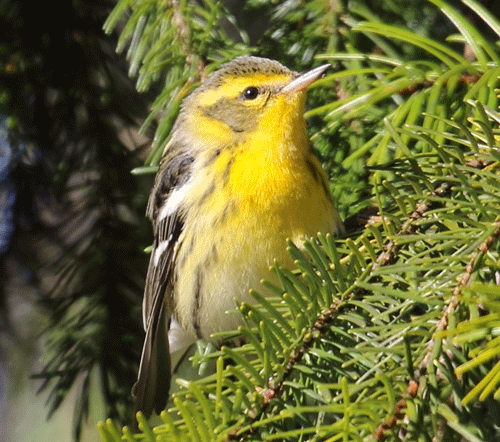
Airlie-Albany CBC
The Airlie-Albany CBC was conducted for the 25th year on December 31. The count circle includes Ankeny Refuge, E.E. Wilson Wildlife, north Corvallis, most of Albany, and several other mostly rural areas covering 4 counties. On count day the 45 participants found 124 species. This ties for second place among all the years this count has been done. Temperatures were mostly in the 40s and 50s, the day was cloudy and was foggy in some areas, and there was occasional misty rain. species found by only one party were:
Cinnamon Teal — Brandon Reishus
Blue-winged Teal (first time in 25 years) — Brandon Reishus
Canvasback — Grant Hoyt
Ring-necked Pheasant — Shane Pruett
Mountain Quail — Joel Geier
Sora — Brandon Reishus
Greater Yellowlegs — Mike & Misty Cannon
Western Gull — Susan Kirkbride
Iceland Gull — Susan Kirkbride
Glaucous Gull — Joel Geier
Rough-legged Hawk — Susan Kirkbride
Peregrine Falcon — Shane Pruett
Western Screech-owl — Joel Geier
Short-eared Owl — Joel Geier
Lewis’s Woodpecker — Grant & Karen Hoyt
Horned Lark — Joel Geier
Clark’s Nutcracker (first time in 25 years, photo) — John Ritchie
Barn Swallow — Bruce Dugger
Chipping Sparrow — Bruce Dugger
Species found by more than one party that are worth mentioning because they’ve often been missed in past years are Common Goldeneye, N. Saw-whet Owl, Ring-billed Gull, Red Crossbill, Swamp Sparrow, and Orange-crowned Warbler. Numbers of Wrentit (46) and Western Meadowlark (100) were double those of the last 2 years, and Varied Thrush numbers were 4x higher than in recent years. Numbers of N. Pintail (~4000) were about half what’s been found in the last 2 years.
~ Paul Adamus & Joel Geier (Co-Compilers)
Airlie-Albany count sectors
The count circle for the Airlie-Albany CBC includes Corvallis north of Crescent Valley High School, most of Albany, E.E. Wilson Wildlife Area, Luckiamute State Natural Area, Ankeny NWR, the southern outskirts of Monmouth-Independence, and more. If you’d like to participate, especially if you enjoy walking in McDonald-Dunn State Forest, please contact Paul Adamus.
Birdathon!
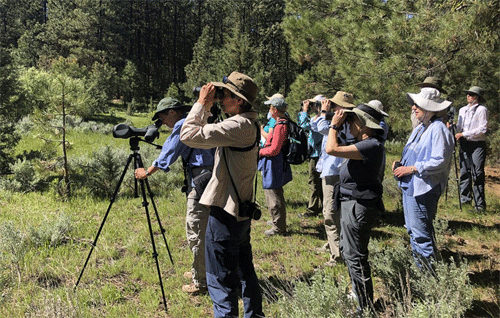
Participating in a birdathon is an excellent way to learn about migratory species, raise funds for environmental projects, add data to a national survey, and have fun. Since 2001, ASC has conducted Birdathons for the benefit of Hesthavn Nature Center. Combined earnings are about $80,000, which has funded a solar composting toilet, museum display cases, new flooring, weather-tight doors and windows, and other projects.
Form a team or go solo on the designated weekend, between April 1 and May 30, which ASC will announce early in the year. This is the peak migration period for birds in the U.S. If you have a conflict in dates, let the coordinator know, and select another weekend during the migration. Ask individuals or organizations to sponsor the team either per species or at a flat rate. Then, bird wherever you are – your backyard, the coast, the mountains, Costa Rica… the sky’s the limit (literally)!
ASC Birdathon_report_form_2019
If you own a local business, sponsoring a team or individual could generate good publicity. Or your business could sponsor every team at a certain rate. This encourages more people to participate, knowing they already have their first sponsor. Beyond raising funds for Hesthavn, more people may feel they have a personal stake in Hesthavn’s success and, more broadly, in wildlife and nature conservation.
ASC Birdathon Official Sponsor Form
Contact Birdathon Coordinator
Other Bird Counts
-
- Project Feeder Watch – Cornell Lab of Ornithology winter-long survey of birds that visit feeders in local areas. Send your count to Project FeederWatch to help scientists track long-term trends. Anyone interested in birds can participate.
- Great Backyard Bird Count – The next count is Feb. 18 – 21, 2022. More than 160,000 people of all ages join the four-day count to create an annual snapshot of the distribution and abundance of birds.
- Oregon Black Oystercatcher Project – The goal is to provide new information about Oregon population estimates, nesting success, and human disturbance. The surveys are conducted on the North, Central, and South Coast from May to November.
